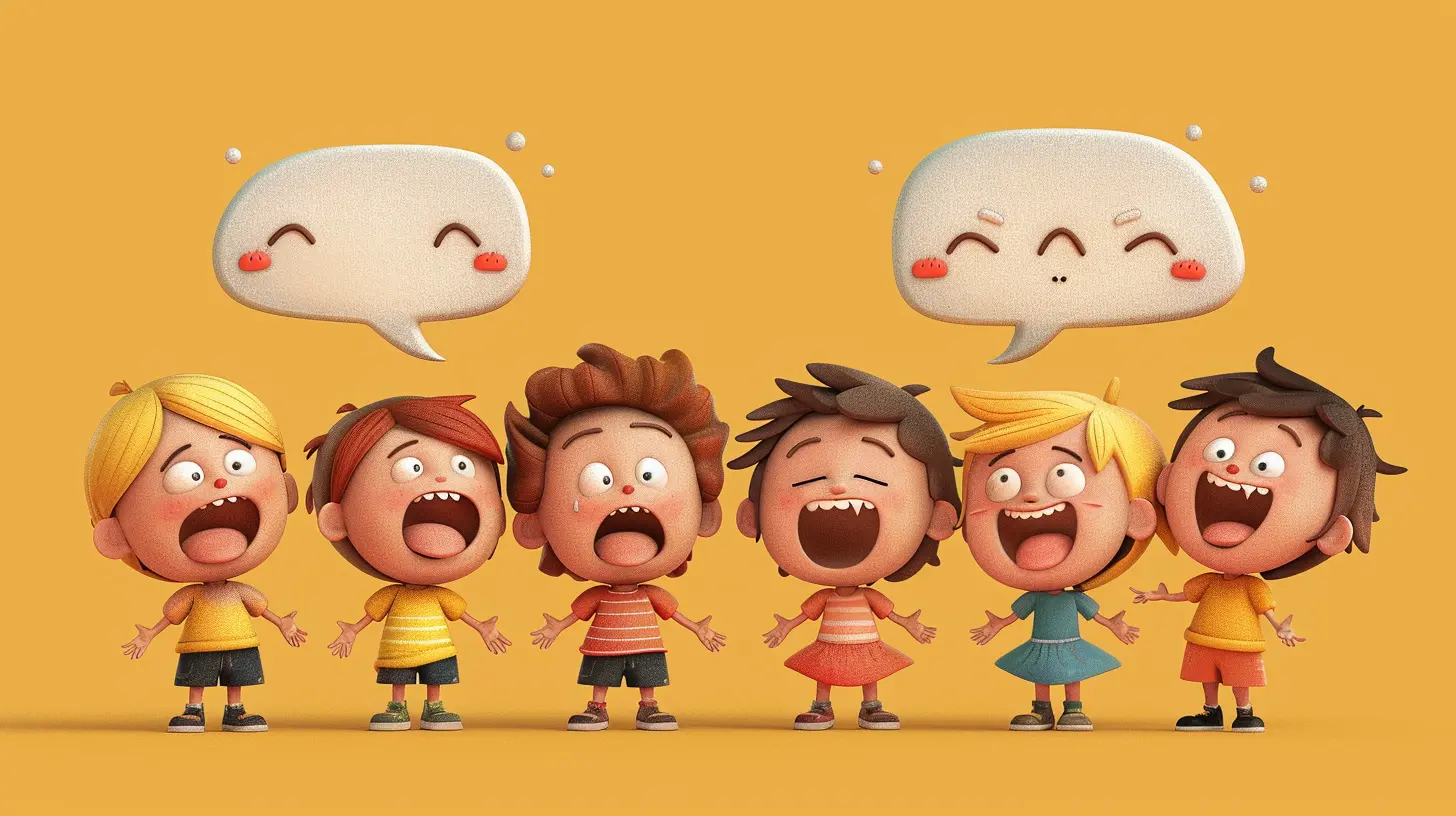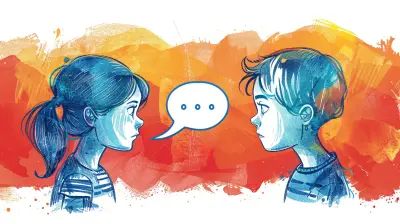The Role of Humor in Effective Communication
26 November 2025
We’ve all been there, sitting through a long, tedious lecture or a lifeless meeting where time slows down to a crawl. Then—bam!—someone cracks a well-timed joke. The room lightens. People smile. Suddenly, everyone’s more engaged and actually listening. That’s the power of humor in action.
Humor isn’t just for stand-up comedians and late-night talk shows. It’s a secret weapon—especially in communication. Whether you're teaching a class, giving a presentation, writing content, or just having a conversation, humor can make your message not only heard but remembered. Let’s unpack the role of humor in effective communication, and why maybe, just maybe, we all need to laugh a little more.
Why Humor? Why Now?
Let’s cut straight to it. Why is humor such a big deal when it comes to communication?Because humor does what plain facts can’t—it emotionally connects. A witty remark can disarm tension, a funny story can humanize the speaker, and a clever pun can make your message stick like peanut butter on toast.
In our fast-paced, info-overloaded world, attention is gold. Humor acts like a magnet that grabs focus and keeps it rooted in the present moment. It transforms dull into delightful and vague into vibrant. And the best part? It doesn't cost a dime.
The Psychology Behind the Laughter
Okay, let’s put on our nerd glasses for a second. Science actually has a lot to say about humor and how it works.Humor activates the brain’s reward system. When we laugh, our bodies release endorphins—the same feel-good chemicals we get from exercise or eating chocolate. It reduces cortisol (that nasty stress hormone) and even improves memory retention. That’s right. Humor makes your brain more likely to store the info it’s paired with.
Emotionally speaking, humor creates a feeling of trust and approachability. When someone makes us laugh, they’re signaling that they’re friendly, open, and safe to be around. That trust is crucial if you want your audience to not just hear you—but to believe you.
Neat, right?
Humor Builds Bridges, Not Walls
Ever walked into a room where the tension was so thick you could slice it with a knife? Yeah, same. Tension and misunderstanding can put a giant pause on communication. But humor? It acts like a pressure valve.Let’s say you're in a debate or trying to negotiate something tough. Dropping a little humor—done right—can defuse conflict and get everyone on the same page. It's like waving an emotional white flag that says, “Hey, I’m human too. Let’s work this out.”
Humor also bridges different cultures, generations, and social groups. While not every joke translates perfectly across boundaries, a shared laugh can start to dissolve those invisible walls.
Connecting With Your Audience (Without Boring Them)
Let’s face it. Nobody wants to feel like they’re reading a textbook when they’re scrolling through content. Humor adds that storytelling sparkle that keeps eyeballs glued to the screen.When you include humor in content—whether that’s a lesson plan, blog post, speech, or training guide—you’re inviting the audience to lean in rather than tune out. People are more likely to share content that makes them smile, and that means more visibility, more connection, and more impact.
Think about it—how many dry, technical articles have you shared lately? Probably close to zero. But a post that made you chuckle and think? You’re hitting the share button before you even finish reading.
Humor & Teaching: A Match Made in Classroom Heaven
Education and humor go together like coffee and cream. Teachers who inject laughter into the learning process often see better student engagement, improved attendance, and even higher test scores.Why? Because when students are relaxed, they’re more willing to speak up, ask questions, and take intellectual risks. Humor makes the classroom feel less like a pressure cooker and more like a collaborative space.
And no, you don’t have to be a professional comedian to do this. Even simple things like telling a funny anecdote from your own experience or using quirky examples while explaining concepts can do the trick. Think of it as seasoning—just enough spice makes the dish unforgettable.
Humor in the Workplace: Not Just for the Water Cooler
Let’s talk office life. Whether you're leading a team, onboarding staff, or just collaborating on a project, humor can make the workplace way more enjoyable—and effective.Companies that foster a culture of light-heartedness often report higher employee satisfaction, better collaboration, and reduced turnover. Laughter at work doesn’t mean slacking off—it means people are comfortable, connected, and engaged.
Humor also plays a massive role in leadership communication. A leader who can laugh at themselves builds trust. It signals confidence, humility, and relatability. And in times of stress? A little laughter can go a long way toward boosting morale and productivity.
Timing is Everything (No Pressure, Though)
So, here’s the catch. Not all humor hits the mark. Timing, tone, and context are everything.Think of humor like seasoning. Too little, and your content is bland. Too much, and it's overpowering. The key is to read the room. Know your audience, understand their sensitivities, and keep it inclusive. It's never funny to punch down or make fun at someone else's expense.
And please, for the love of all things witty, avoid forcing it. A bad pun or awkward joke can derail your point faster than a PowerPoint crash before a presentation.
The best humor is authentic. It sounds like you, feels natural, and fits the moment.
Different Styles of Humor (Yep, There’s More Than One)
Let’s break it down. Not all humor sounds the same or has the same effect. Recognizing different types can help you find your voice and style:- Self-deprecating humor: Making fun of yourself in a harmless, light-hearted way. Great for building rapport and humility.
- Observational humor: Pointing out the ridiculousness in everyday life. Relatable and often very effective.
- Anecdotal humor: Sharing a funny, true story to illustrate a point. People remember stories way better than stats.
- Wordplay and puns: Clever use of language. Just be careful not to overdo it—too many, and people might roll their eyes.
- Satirical or witty humor: More intellectual, often layered. Be cautious—this can miss the mark if not done right.
You don’t have to stick to one. Mix and match depending on your context and your audience.
Humor + Digital Communication = Magic
Let’s shift gears to digital life. Emails, Zoom meetings, blog posts, Instagram captions—humor belongs here too.A well-placed emoji in an email can soften the tone. A playful subject line can skyrocket your open rate. Even a funny meme during your virtual team meeting can build camaraderie.
In content writing, humor boosts readability and shareability. People don’t just want information—they want an experience. If you can make someone both laugh and learn? You, my friend, are winning the internet.
Common Mistakes to Avoid
Now, before you go adding dad jokes to every email, let’s talk about a few pitfalls:- Overdoing it: Remember, you’re a communicator first. Humor is the sidekick, not the hero.
- Being insensitive: Avoid jokes that target race, religion, gender, or other personal identities. It’s not humor if it hurts.
- Going off-topic: Humor should support your message, not distract from it.
- Trying too hard: If it doesn’t come naturally, don’t force it. Let your own style shine through.
Bottom line? Think of humor as a bridge, not a barrier.
How to Add Humor Without Being a Comedian
Still feeling unsure? Here are a few easy ways to slip humor into your communication without breaking a sweat:1. Use analogies: Compare your topic to something funny or familiar (e.g., "Writing without editing is like trying to cook without tasting—risky at best.")
2. Add funny visuals: Images, GIFs, or memes can lift the mood instantly.
3. Tell stories: Share moments of personal failure or awkwardness—people relate to that, and it builds trust.
4. Use playful language: Swap out stiff words with more casual, quirky ones when appropriate.
5. Mind your tone: Keep it friendly and light. Humor thrives in a warm environment.
Wrapping It Up With a Smile
Humor isn't just a "nice-to-have" in communication. It’s a powerful tool—one that can connect, influence, and truly make your message stick. Whether you’re teaching students, leading a team, writing content, or just chatting with friends, don’t underestimate the magic of a shared laugh.You don’t need to be the next stand-up star or have a Netflix comedy special. You just need to be authentic, intentional, and willing to show a bit of your human side.
Because at the end of the day, humor doesn’t just make communication better—it makes it human.
all images in this post were generated using AI tools
Category:
Communication SkillsAuthor:

Zoe McKay

